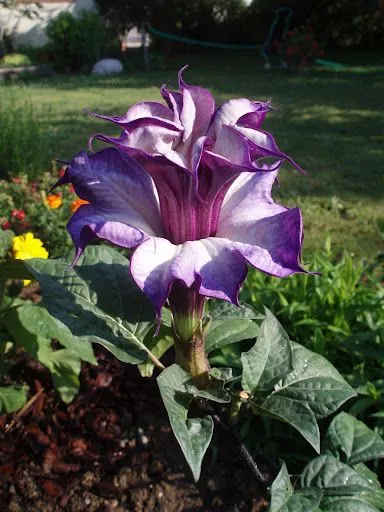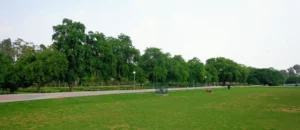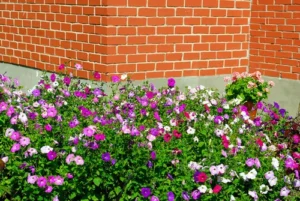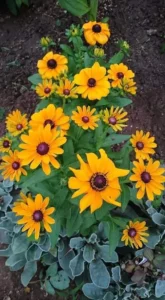Designing Accessible Garden 2024
Presentation
Gardens have for quite some time been a haven for unwinding, imagination, and association with nature. Be that as it may, not all nurseries are planned considering openness. Open nurseries are mindfully made spaces that take special care of the requirements of everybody, incorporating individuals with actual handicaps, tangible debilitations, and mental difficulties. This exhaustive aid investigates the standards of available nursery configuration, offers down-to-earth guidance for execution, and features models from around the world to move your planting projects.
1. Understanding the Open Nursery Plan
1.1 What is an Open Nursery?
An available nursery is intended to be comprehensive and inviting to individuals, all things considered. This incorporates:
Actual Accessibility: Guaranteeing that individuals with versatility issues can explore the nursery without any problem.Tactile Accessibility: Making spaces that take special care of those with visual or hear-able debilitations.
Mental Accessibility:** Planning components that are justifiable and usable for individuals with mental or learning incapacities.
The objective is to make a space that permits everybody to encounter the delight of planting and nature, no matter what their physical or tactile capacities.

1.2 The Significance of Open Nurseries
Open nurseries are critical in light of multiple factors:
Inclusivity They give equivalent open doors to delight and support.
Restorative Benefits Gardens offer restorative advantages for emotional well-being and prosperity, which ought to be accessible to everybody.
Local area Engagement Available nurseries can act as local area centers where individuals from different foundations meet up.
2. Standards of Available Nursery Plan
2.1 General Plan Standards
The general plan intends to make spaces that are usable by everybody, no matter what their capacities. Key standards include:
Evenhanded Use The nursery ought to be valuable and open to individuals with assorted capacities.
Adaptability in Use Plan components ought to oblige a great many inclinations and capacities.
Basic and Instinctive Use The nursery format and highlights ought to be straightforward and explore.
Discernible Information Data about the nursery ought to be conveyed in more than one way, like text, images, and sounds.
Capacity to bear Error The plan ought to limit perils and consider simple amendment of missteps.
Low Actual Effort The nursery ought to be not difficult to utilize and keep up with negligible actual exertion.
Size and Space for Approach and Use Guarantee that there is sufficient room for individuals to move around and collaborate with the nursery.
2.2 Availability Highlights for Actual Handicaps
Planning for actual availability incorporates:
Pathways Ways ought to be smooth, wide, and level. Use materials like rock, pavers, or cement to guarantee steadiness.
Ramps Furnish inclines with delicate slants (1:12 proportion) and solid handrails for wheelchair access.
Raised Bed Raised garden beds can be more open for individuals who use wheelchairs or experience issues bowing.
Seating Incorporate seats with backrests and armrests at ordinary stretches along the way.
2.3 Tangible Availability Highlights
To oblige tangible impedances:
Visual Cues Utilize differentiating tones and surfaces for ways and elements. Furnish clear signage with huge textual styles and images.
Hear-able Elements Integrate water highlights or wind rings to give hear-able upgrades. Guarantee that sounds are not overpowering or upsetting.
Material Experiences Utilize different surfaces in plantings, ways, and nursery structures for a scope of material encounters.

2.4 Mental Openness Highlights
For mental openness:
Clear Navigation Utilize basic, natural formats with clear signage and milestones.
Instructive Signage Give simple-to-understand names and enlightening signs about plants and nursery highlights.
Intelligent Elements Incorporate highlights that welcome investigation and connection, like accessible plant surfaces or versatile nursery components.
3. Executing Available Nursery Plan
3.1 Arranging Your Available Nursery
Site Analysis: Assess the nursery space for its ongoing availability and recognize possible boundaries. Think about the landscape, existing designs, and the expected utilization of the nursery.
Plan Considerations: Foster a plan that integrates widespread plan standards. Sketch out the format, including pathways, establishing regions, and guest plans.
Consultation: Draw in individuals with handicaps and openness specialists to guarantee that your plan addresses different issues.
3.2 Picking Plants for Openness
While choosing plants, consider:
– **Low Maintenance:** Pick establishes that are not difficult to focus on and don’t need consistent consideration.
– **Occasional Interest:** Incorporate plants that offer visual interest over time.
– **Safety:** Stay away from plants with thistles or harmful properties.
**Instances of Open Plants:**
– **Lavender:** Fragrant and outwardly engaging, with low upkeep needs.
– **Hostas:** Conceal open-minded plants with appealing foliage.
– **Sedum:** Solid and low-support with differed surfaces.
3.3 Making Available Highlights
**Pathways:** Guarantee that ways are:
Wide:No less than 36 inches wide for wheelchair access.
Smooth: Liberated from obstructions and produced using stable materials.
Well-Lit: Sufficiently enlightened for night use.
Ramps: Develop slopes that are:
– **Gentle:** With an incline proportion of 1:12.
– **Stable:** Produced using non-slip materials.
– **Safe:** With handrails on the two sides.
**Raised Beds:** Configuration raised beds that are:
– **Accessible:** At a level that permits simple access for situated nursery workers.
– **Functional:** With strong sides and sufficient room for planting.
**Seating:** Provide:
– **Benches:** With strong backrests and armrests.
– **Shifted Options:** Different guest plans for different necessities.
4. Contextual investigations of Available Nurseries
4.1 The Imperial Botanic Nurseries, Kew, Britain
The Imperial Botanic Nurseries at Kew have taken critical steps in making available spaces. Key elements include:
– **Wide Paths:** Smooth, open ways all through the nursery.
– **Tangible Gardens:** Regions intended to connect all detects, incorporating a tangible path with sweet-smelling plants and material elements.
– **Instructive Programs:** Programs intended for individuals with inabilities, including material visits and studios.
4.2 The Chicago Botanic Nursery, USA
The Chicago Botanic Nursery offers a scope of open elements:
– **Available Trails:** Very much kept up with trails for wheelchairs and bikes.
– **Instructive Resources:** Projects and materials for guests with various capacities.
– **Intelligent Elements:** Highlights, for example, a tactile nursery and open plant shows.
4.3 The Botanic Nursery, Wellington, New Zealand
The Wellington Botanic Nursery centers around inclusivity with:
Available Pathways: Smooth, wide ways, and delicate slants.
Tangible Gardens: A devoted region for tangible encounters, including fragrant plants and material surfaces.
Local area Engagement: Standard occasions and exercises for different crowds.
4.4 The Eden Undertaking, UK
The Eden Undertaking highlights:
Open Design: Simple to explore pathways and inclines.
nstructive Exhibits Intelligent showcases and instructive assets for all capacities.
Tangible Gardens: Gardens intended to invigorate the faculties and deal connecting with encounters.
4.5 The Butchart Nurseries, Canada
Butchart Nurseries incorporates:
Available Features Inclines, smooth ways, and available offices.
Tangible Experiences:** Lovely botanical shows and water includes that connect with the faculties.
Directed Tours:** Visits and assets for guests with inabilities.
5. The Fate of Available Nurseries
5.1 Advancements in Nursery Plan
Future improvements in available nursery configuration might include:
Shrewd Technology Utilization of innovation for route helps intuitive shows and mechanized highlights.
Manageable Practices Expanded center around eco-accommodating materials and practices.
Local area Involvement More noteworthy accentuation on including assorted networks in garden plan and upkeep.
5.2 Extending Availability
There is a developing acknowledgment of the requirement for additional open public spaces. This incorporates:
Legislation Supporting for more grounded regulations and rules for public nursery openness.
Awareness Expanding mindfulness about the significance of available nurseries through backing and instruction.
Available nurseries are something beyond actual spaces; they address a guarantee of inclusivity, local area, and prosperity. By sticking to general plan standards, consolidating open elements, and drawing motivation from fruitful models all over the planet, you can make a nursery that is inviting and charming for everybody.
Whether you are a nursery devotee, a fashioner, or a local area organizer, this guide gives the instruments and experiences you want to foster a nursery that epitomizes the standards of openness and inclusivity. As we push ahead, we should proceed to develop and advocate for spaces that mirror the different requirements and delights, everything being equal.
References
1. Heschong, Laura. The Available Nursery: Planning Spaces for Everyone. Wood Press, 2021.
2. Tilley, Chris. Comprehensive Plan: Planning for All Abilities*. Wiley, 2022.
3. Mace, Ronald L. Designing for Openness: A Manual for All Inclusive Design*. HarperCollins, 2020.
4. Whelan, Lisa. Making Tactile Nurseries: Planning for Availability and Enjoyment. Green Books, 2023.
5. Reid, Jane. Cultivating for Everybody: Comprehensive Plans for Local Area Spaces. Abrams Books, 2023.



